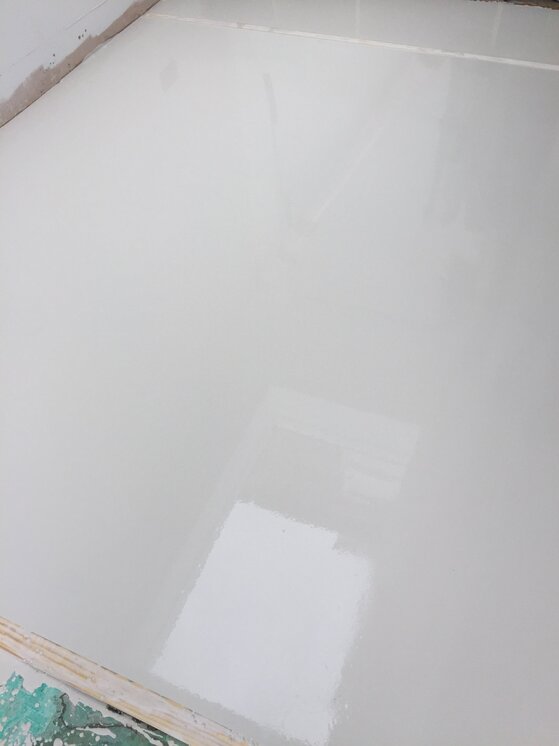Have you guys every tried using pin levels, rakes or combs ?
I stand up when I'm laying smoothing compounds and use a a pin level amd mixing station.
Not only is it less stress on the body your laying and equal amount of compound over the floor at a chosen thickness.
Then spike roller every time to release trapped air in the mix and smooth out tide marks.
Priming is essential Lets say it's an normal portland cement floor which tend to be highly porous. Look at it like the cement subfloor is thirsty and needs good drink. If you don't prime, the sub will drink the moisture from your mix which will reduce the flow and workability of the mix. When you prime first mix at lets say ratio of 4 parts water to 1 part primer
which is average for the primers I use. Apply with a roller or even a brush. If the primer is absorbed ie dries really quickly then you need to repeat the process I normal saturate a porus sub floor until it can't drink any more Then a neat coat of primer after that. That's the floor fully sealed and the smoothing compound given the best chance to fully bonded to the sub floor whilst also killing any dust. (Don't forget to hoover the life out of the floor before hand) Might sound extreme but I'm laying karndean and Amtico so it must be like glass.
Don't spill water, latex or get excessive amounts of powder on the floor as your mixing This can create week spots in the finish.
Be aware of how your bags are stored or where they are kept. Cold and wind can cause powder to start to set in the bag It might look OK but unknowingly the setting process can prematurely begin.
Keep your bags and bottles out of the sun Don't get to the job and stack them out side in the summer keep everything cool and dry.
Another thing most don't realise
If your mixing multiple mixes in the same bucket the residue from the last mix will start to set off your new mix so on large areas you really need to use multiple buckets so you can have a labourer keep cleaning them as you go A mixing station will help a lot to with speed.
I've missed alot out here but that's the basics


